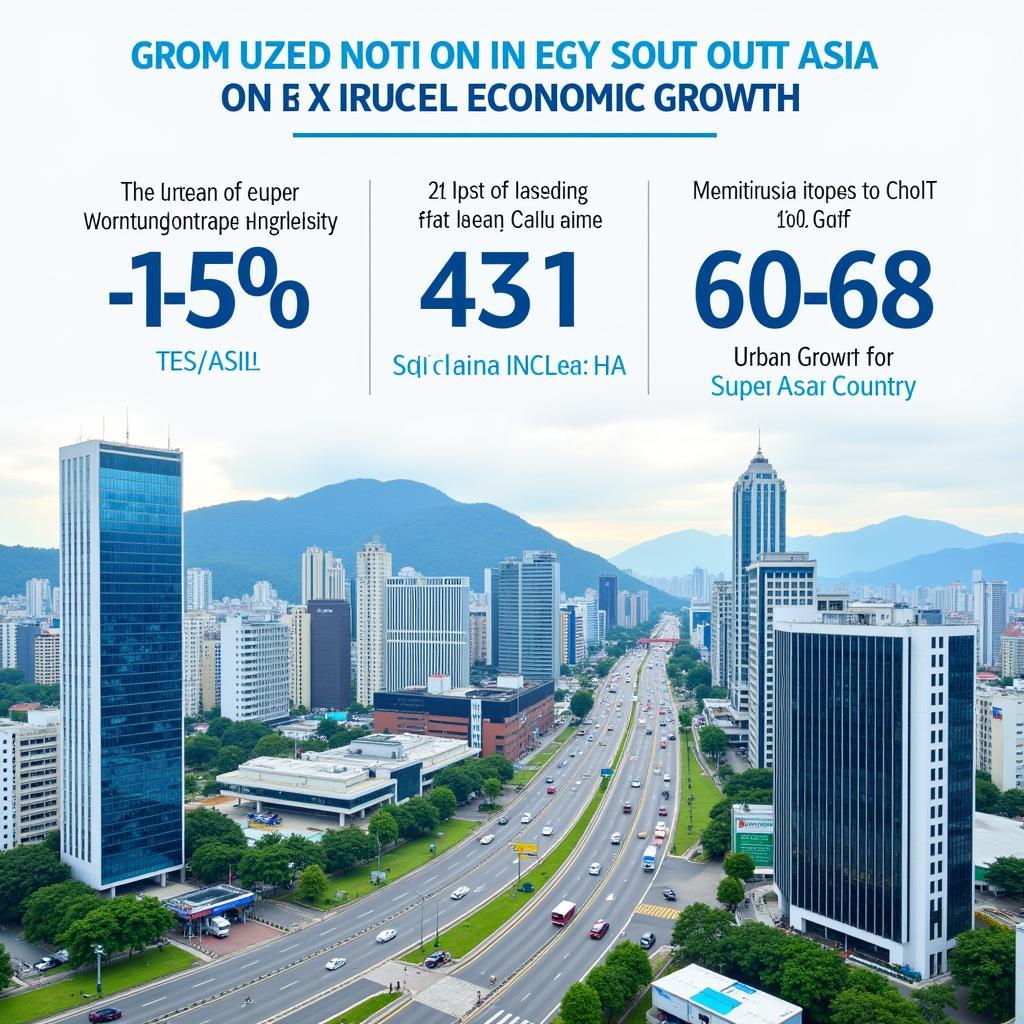ASEAN’s rise as the 4th largest economy is a remarkable story of growth and integration. This dynamic region has transformed itself into a global economic powerhouse, attracting investment, fostering innovation, and improving the lives of millions. But what factors have propelled this growth, and what does the future hold for this vibrant economic bloc?
The journey of ASEAN to becoming the 4th largest economy has been driven by a combination of factors, including a young and growing population, strategic geographic location, increasing urbanization, and proactive government policies that promote trade and investment. These factors have created a fertile ground for businesses to thrive and for the region to integrate further into the global economy. This rise presents both opportunities and challenges, and understanding them is crucial for anyone interested in the future of Southeast Asia.
Factors Driving ASEAN’s Economic Growth
Several key elements have contributed to ASEAN’s impressive economic performance. These include a demographic dividend with a young and growing workforce, a strategic location at the heart of major shipping lanes, and rapid urbanization leading to increased consumer spending and infrastructure development. Government initiatives promoting trade and investment, such as the ASEAN Free Trade Area (AFTA), have also played a significant role. These factors have created a positive feedback loop, attracting foreign direct investment and stimulating domestic innovation.
The Role of Demographics and Urbanization
ASEAN’s youthful population is a major asset, providing a large and dynamic workforce. This demographic dividend is further amplified by rapid urbanization, which creates new markets and drives demand for goods and services. This combination of a young workforce and growing urban centers is a powerful engine for economic growth.
 ASEAN Urbanization and Economic Growth
ASEAN Urbanization and Economic Growth
Trade and Investment: The Foundation of ASEAN’s Success
The ASEAN Free Trade Area (AFTA) and other trade agreements have significantly lowered barriers to trade within the region and with external partners. This has led to increased trade flows, foreign investment, and economic integration. ASEAN 2030 further emphasizes these priorities. These policies have created a more favorable environment for businesses and fostered greater competition, leading to increased productivity and innovation.
Challenges and Opportunities on the Horizon
While ASEAN’s economic prospects are bright, the region also faces challenges. These include narrowing the development gap between member states, addressing environmental concerns related to rapid industrialization, and navigating geopolitical complexities. However, these challenges also present opportunities. For instance, the push for sustainable development can create new industries and jobs in green technologies. By tackling these challenges head-on, ASEAN can ensure its continued economic growth and prosperity. Learn more about ASEAN’s future economic trajectory by exploring resources like asean 4th largest economy 2030.
Navigating Geopolitical Complexities
ASEAN’s strategic location places it at the center of global power dynamics. Navigating these complexities requires a delicate balancing act, fostering strong relationships with all major powers while maintaining regional unity and autonomy. This is crucial for ensuring a stable and predictable environment for continued economic growth. You can also learn about the broader ASEAN agenda by visiting asean agenda 2030.
Conclusion
ASEAN’s emergence as the 4th largest economy is a testament to the region’s dynamism, resilience, and commitment to integration. While challenges remain, the future looks bright for ASEAN. By continuing to embrace open trade, invest in its people, and address key challenges, ASEAN is poised to maintain its impressive growth trajectory and become an even more significant player on the global economic stage. Understanding the factors driving this growth is essential for anyone interested in investing in or partnering with this dynamic region. More insights on ASEAN’s future can be found on resources like asean 2030.
FAQ
- What factors contribute to ASEAN being the 4th largest economy?
- What are the main challenges facing ASEAN’s economic growth?
- How does ASEAN’s youthful population contribute to its economic success?
- What is the role of the ASEAN Free Trade Area (AFTA)?
- How does urbanization impact ASEAN’s economy?
- What are the opportunities for sustainable development in ASEAN?
- How does ASEAN navigate geopolitical complexities?
When you need assistance, please contact us:
Phone: 0369020373
Email: [email protected]
Address: Ngoc Lien Village, Hiep Hoa, Bac Giang, Vietnam.
We have a 24/7 customer service team.

